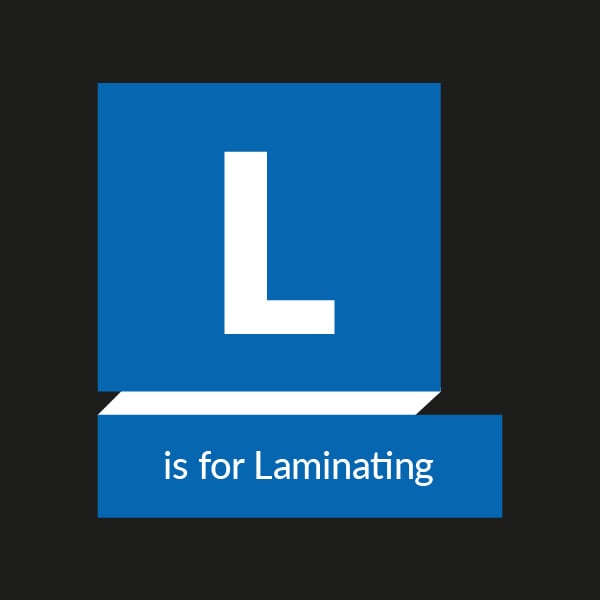
Our A to Z of wide format - L is for Laminating
Applications, Bleed, RIP Software…. We get asked lots of questions about the world of Wide Format on a daily basis. At Signmaster we are here to help and our lovely team of experts have pulled together a handy A to Z guide answering the most frequently asked questions.
Introducing the Signmaster A to Z of Wide Format
This is a series of helpful blogs, guides and articles that we hope you will find useful. We will post a new blog every fortnight and we’d love to know what you think so please comment or drop us an email. We’d love to hear from you!
This week it’s all about L for Laminating

What is Laminating?
Laminating is a versatile process that is used in the finishing stage of wide format printing by adding a layer of protection over your print. A ‘roll laminator’ is the most widely used laminator within the industry. It uses 2 rollers which have a gap between them to press two materials together. The purpose of this is to apply a smooth and even pressure to ensure the two materials bond together properly; eliminating bubbles or creases. Although our premium solution for mounting vinyl’s to board is the Flatbed Applicator, Roll Laminators can also be used for this, which makes the process so much easier than the conventional mounting by hand and helps reduce damage and errors that can occur when doing by hand.
In our opinion, common laminates that you may use for your prints include:
Gloss – a shiny finish giving your prints a striking look, typically used for outdoor use.
Matt – a duller finish, however gives your prints an overall look of high class, typically used for indoor use as it avoids any light reflection.
Flooring – a textured finish giving your prints a unique look, typically used for exhibition displays and floor graphics as it is anti-scratch resistant
Dry Wipe – a gloss finish giving your prints a striking look, typically used for whiteboard graphics
Laminators can also be used for applying application tape.
What is the difference between cold, single hot and double hot laminators?
On cold laminators silvering may occur as there is no heat to soften the laminate / glue, this will disappear over a day, however if you are producing prints with a quick turnaround it is very worthwhile to purchase a single hot laminator where the heat will soften the laminate to eliminate silvering and will also give a better adhesive.
Double hot laminators are the perfect solution for any wide format encapsulating requirement. It involves a heat activated thermal film being applied on both sides of a print. The finished result is trimmed to leave a clear border around the edge of the print.
Why laminate your prints?
- 1. It enhances the appearance - Laminating will bring out the colour, quality and professionalism of your prints
- 2. Durability - As a laminate has a greater tear resistance, laminating will make your prints more durable
- 3. Scratch resistance - Adding a laminate will also protect your prints from any potential scratches.
- 4. Water and chemical resistance - Adding a laminate will protect your prints from any water or other liquids.
- 5. UV protection – some laminate films contain UV ink inhibitors - Adding a laminate will also protect your prints from UV rays. All prints will fade over time outdoors, however adding a laminate will increase the longevity of the print.
- 6. Increase business revenue - Adding a laminator to your business will maximise your return on investment in print equipment, as everything becomes quicker, easier and reduces waste; you will see increases in both your production and profits!
-
 Laminating tips
Laminating tips - - Allow at least 24 hours for inks to dry and gas-off before laminating your prints
- Leave 300mm at the start and end of your print to allow room for feeding through the laminator
- The more tension the better
- Ideal heat temperature is to be set at 45°
- Slow the speed down on the laminator for more control
- Having a take-up unit will allow your business to laminate using 1 member of staff
- If you have any questions about laminating please give a call; our specialists are on hand to give their expert advice!


